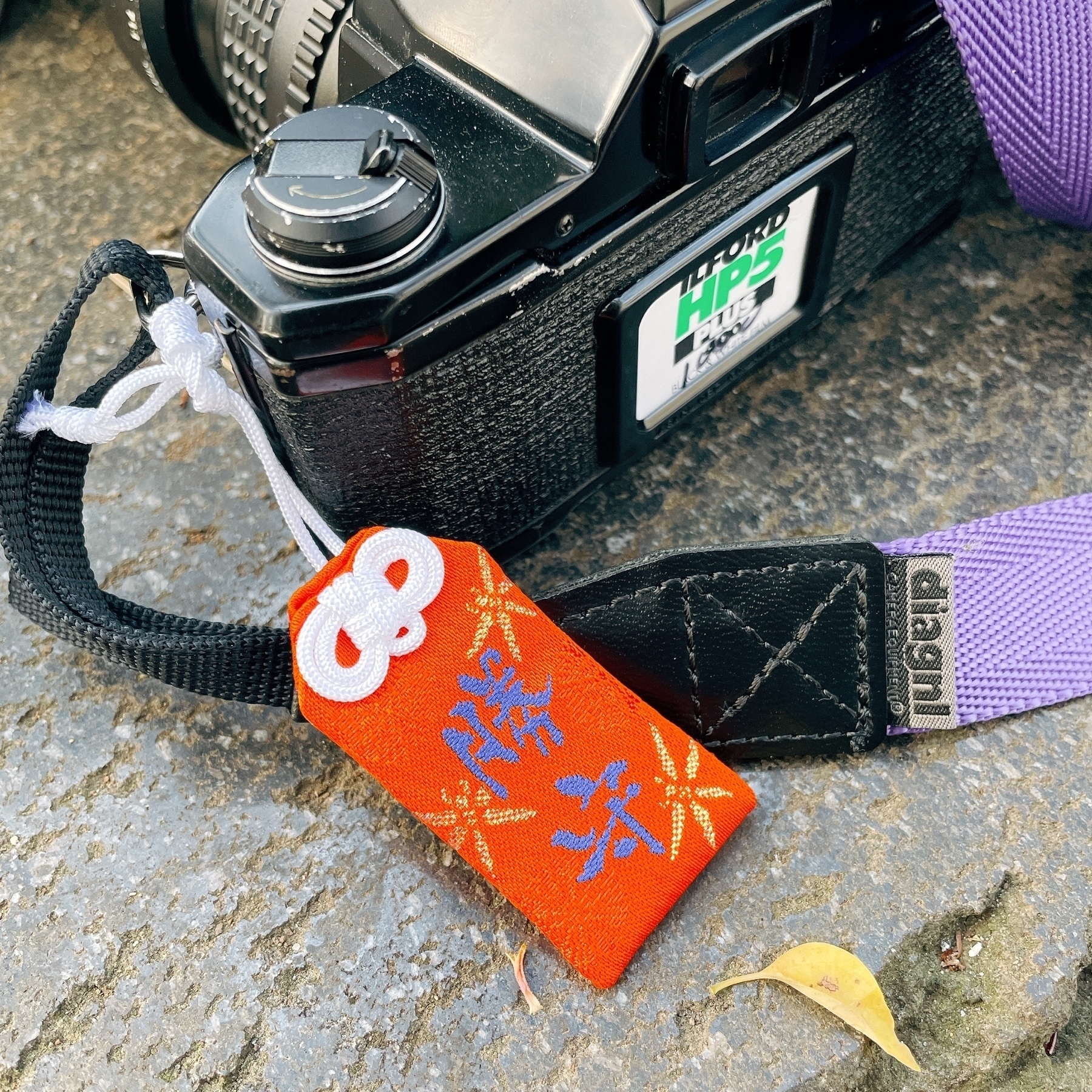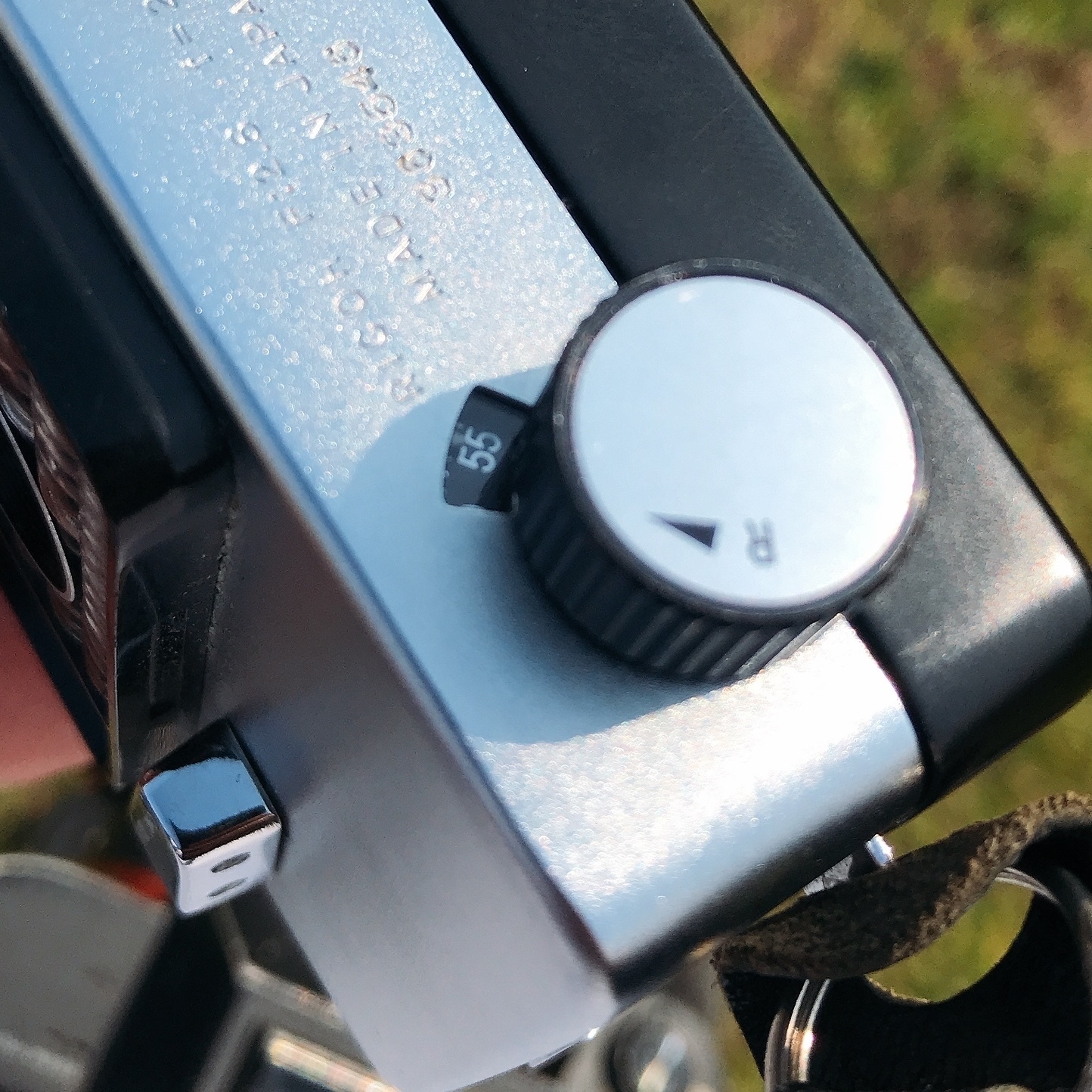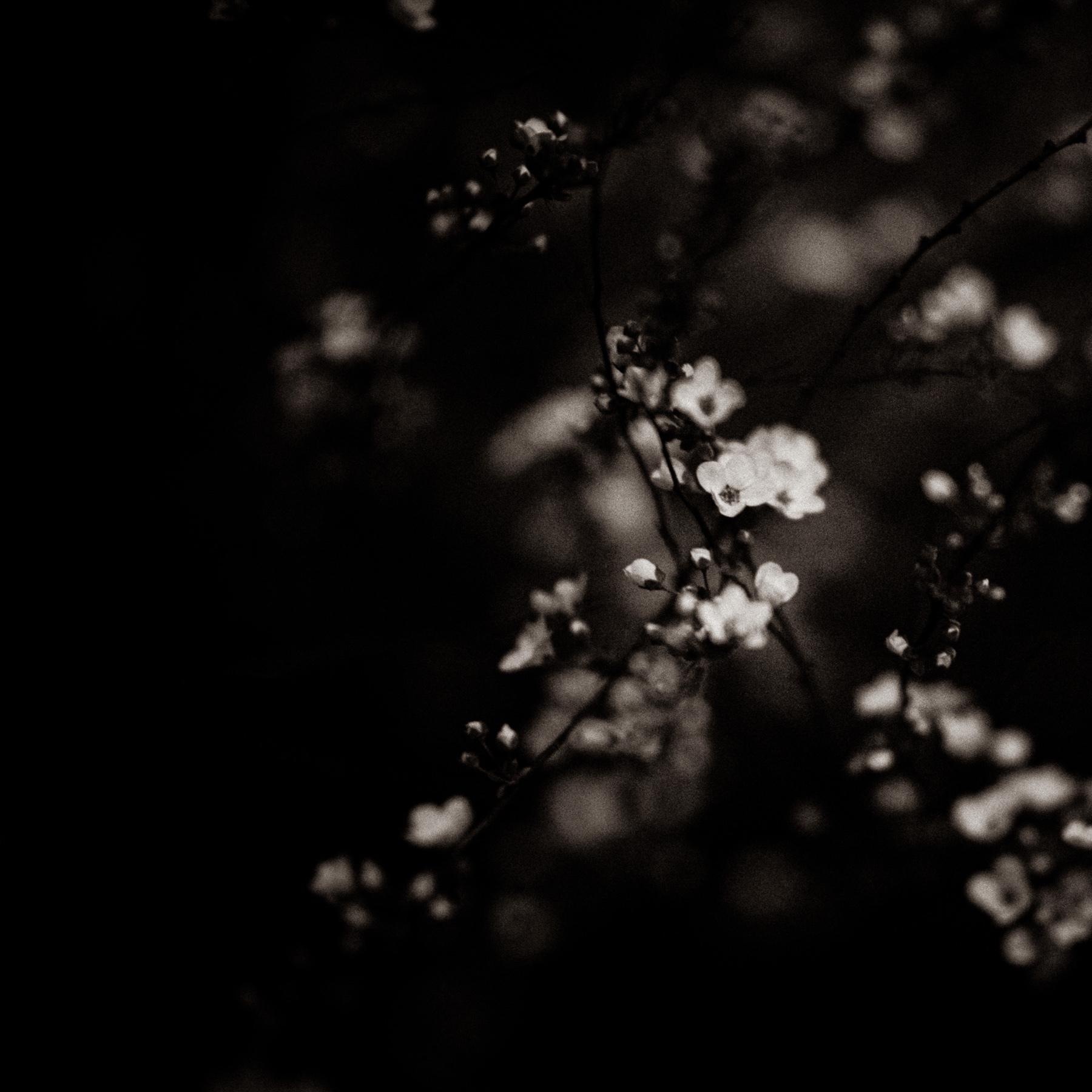Convergence Factor: Micro
Somewhere in Japan № 34: Moments in Suspension
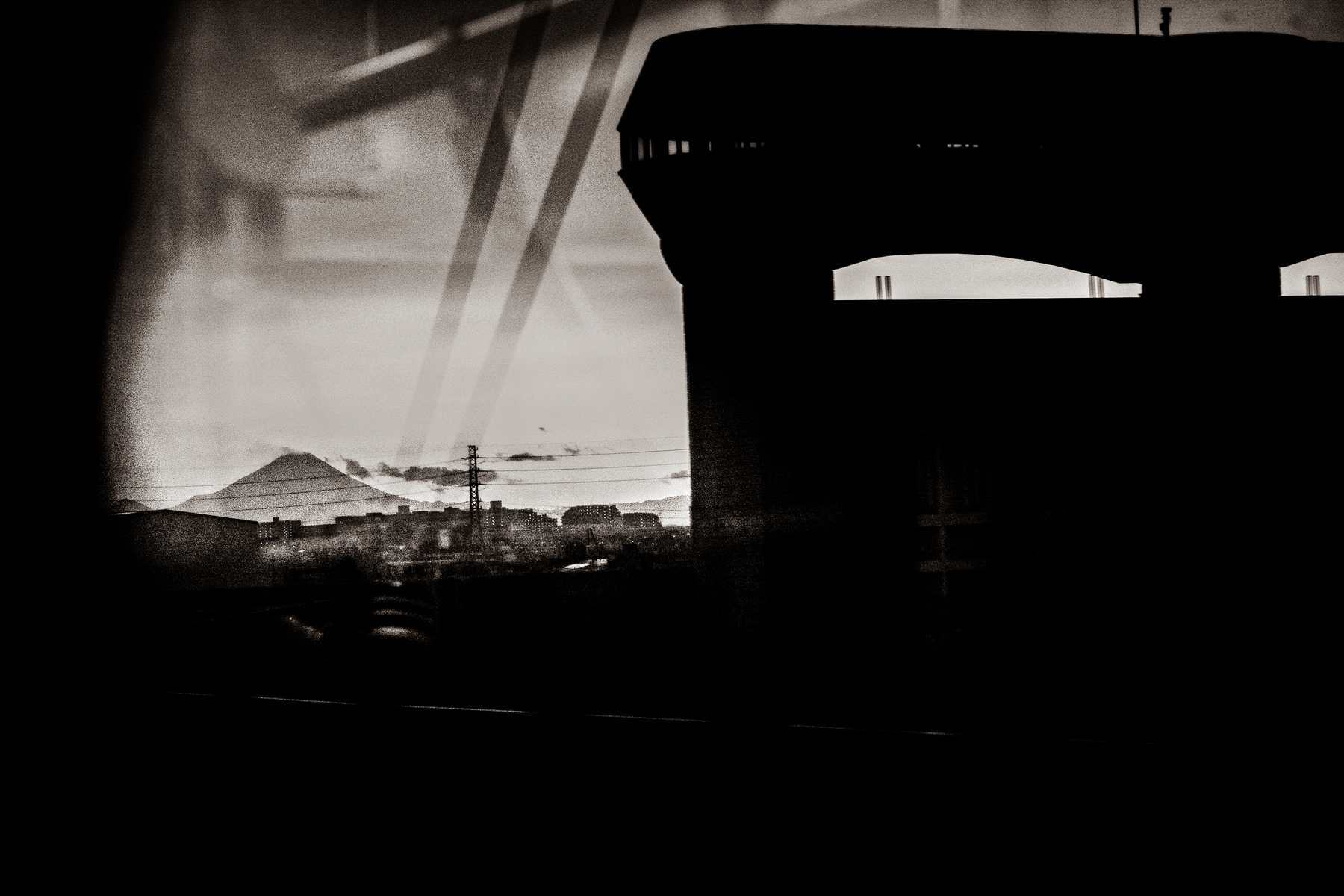
35°49'57.4638"N, 139°36'50.2416"E
Three small children play in a public park sandbox under a cedar tree. The smallest of them is digging a hole with a stick, eschewing the nearby yellow plastic shovel. Two women sit on an adjacent bench. One of them wears a large-brimmed hat.
In an overgrown lot, thick with waist-high weeds, a large white cat observes several crows pecking at something on the ground. Its tail flicks frenetically from side to side.
Mt Fuji flashes into view, framed between apartment towers and above a shopping street.
A man wades in a river, his fishing line trailing downstream. A black Shiba dog waits on the shore, chewing intently on its paw while lying next to a folding stool and a blue backpack.
All of them disappear from view just as quickly as they appeared.
Looking out the window of a train from an elevated track, you can briefly glimpse many unfolding scenes. And the more closely you pay attention, the more you can see.
Situations in streets, schoolyards, parks, and parking lots. Domestic scenes observed through apartment windows. Views into the lives of people, animals, and empty places.
I often wish I could take pictures of these scenes, or somehow freeze what I’m seeing, so that I could observe them more closely, take in more details. Even an additional five seconds could yield so much greater depth of understanding and appreciation.
It is possible, though, that something of the experience would be lost, were these glimpses not so fleeting. It’s possible that, by seeing more, we might end up appreciating them less. They are special specifically because of their brevity.
These posts also appear on the project's main site, Somewhere in Japan. If you'd like to receive these posts directly by email, you can sign up for the free newsletter version using the form at the bottom of the page.
Somewhere in Japan № 33: Keeping Contained
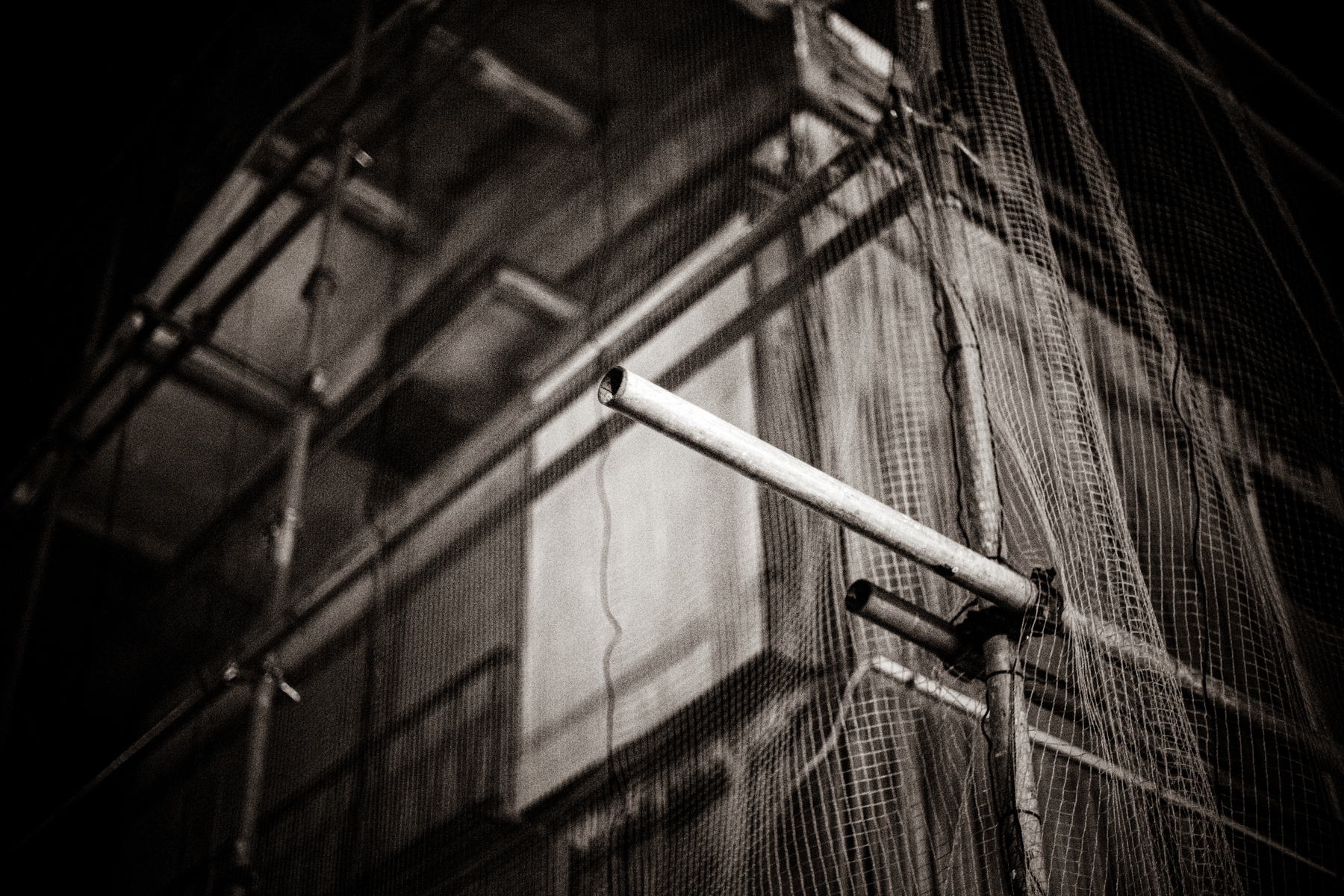
35°51'10.533"N, 139°39'43.4226"E
The netting may be loosely draped or cinched up tight. It depends on the building. The effect of the former is not unlike a veil, while the latter suggests something more like a corset. In either case, the purpose is the same: to prevent problems caused by falling debris.
With buildings still in use, exterior cladding sometimes ages poorly or gets damaged by an earthquake or a typhoon. The rest of the building is effectively fine, though, so it gets the tightly wrapped net, the borders contoured around doors and any windows necessary for emergency egress.
With a derelict house, however, the problem is just that the entire structure is falling apart, and becomes apt to shed parts of itself onto the sidewalk or street without warning, especially if the wind kicks up. And so, the coarse net is draped over them in great green swaths.
There are several such abandoned houses in my neighborhood. One stands on an overgrown, jungle-like lot with a corroded, corrugated metal fence around most of it. The siding is falling off, many of the windows are broken, the roofing is coming off in sections, and the exterior steel staircase is all but entirely rusted through.
Around the building, like a supplemental set of bones, stands a framework of steel scaffolding. Wrapped around all of it is the net.
It reminds me of a broken-legged racehorse with a tarpaulin drawn over it before the injection, or a shroud wrapped around the recently deceased. The damage is too severe and cannot, will not be healed.
Announcing The Somewhere in Japan Journal, Volume 1
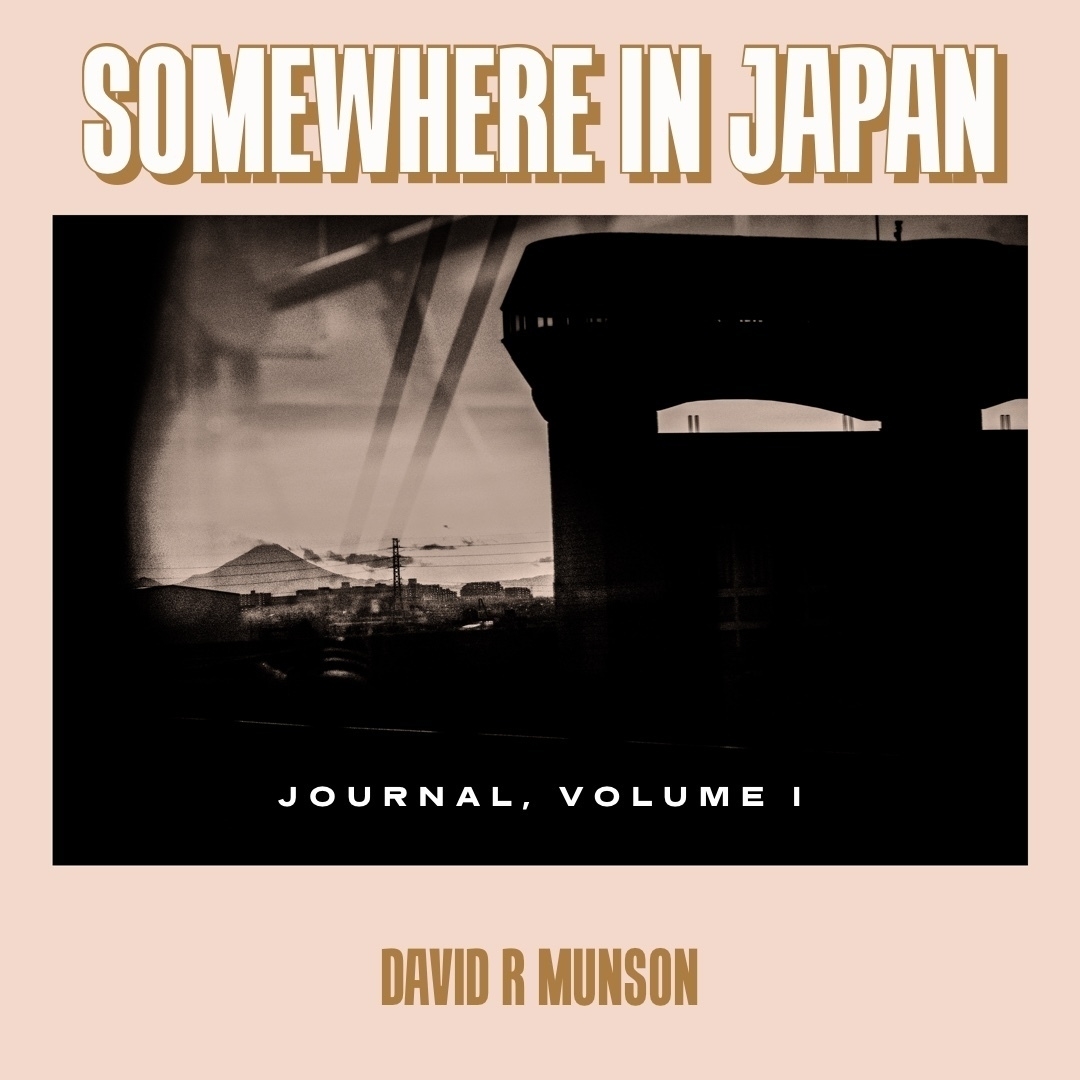
I’ve decided to put my posts from Somewhere in Japan into a journal format a few times a year. It’ll come out next month, and again in September and January. There’s a presale up now for the journal, which includes a couple related discounts. Check it out!
Somewhere in Japan № 32: Inconvenient Canopies

They lurk in great piles behind convenience stores and in train station utility rooms. They are clustered in homes, offices, public toilets, parks, waiting rooms, and restaurants. They congregate in unpredictable numbers, multiplying when nobody’s looking, becoming over-numerous. Until they’re needed, that is. When the rain begins, they vanish quickly into the ether.
If you took a year’s worth of rainy days in the Tokyo area and put them all together, they would last a cumulative four and a half months. Umbrellas are, therefore, an inescapable and lackluster part of life.
These devices have remained nearly unchanged in both their design and their mediocrity for hundreds of years. They will keep you somewhat dry, so long as the rain isn’t too heavy (torrential rains splash) or too light (a mist easily wafts). If the wind is strong, your canopy may be caught by a gust and inverted, maybe even torn apart. A whipping gale may lead to the impression that it is somehow raining up.
Even when getting peak performance out of your umbrella, never is it convenient. It is in the way, it is occupying a hand you’d rather be using for something else, it is always at risk of being left behind or stolen.
On the sidewalk, people take up many times as much space as on sunny days. On crowded trains, everyone has a weapon they’re often not aware that they’re wielding. They are, simply, a pain.
I must be fair, though. They’re not an entirely losing proposition. They will generally keep you from getting quite as wet as you would without one, for example. They also make great pretend fencing foils when you're bored with a friend, such as when waiting for the bus.
Truly, though, the saving grace of this clumsy thing is that it can provide a person with a relatively private place in which to exist for a time.
I know few moments as peaceful as those spent standing perfectly still, simply listening to the sound of a gentle rain falling on my umbrella.
Somewhere in Japan № 31: The Management
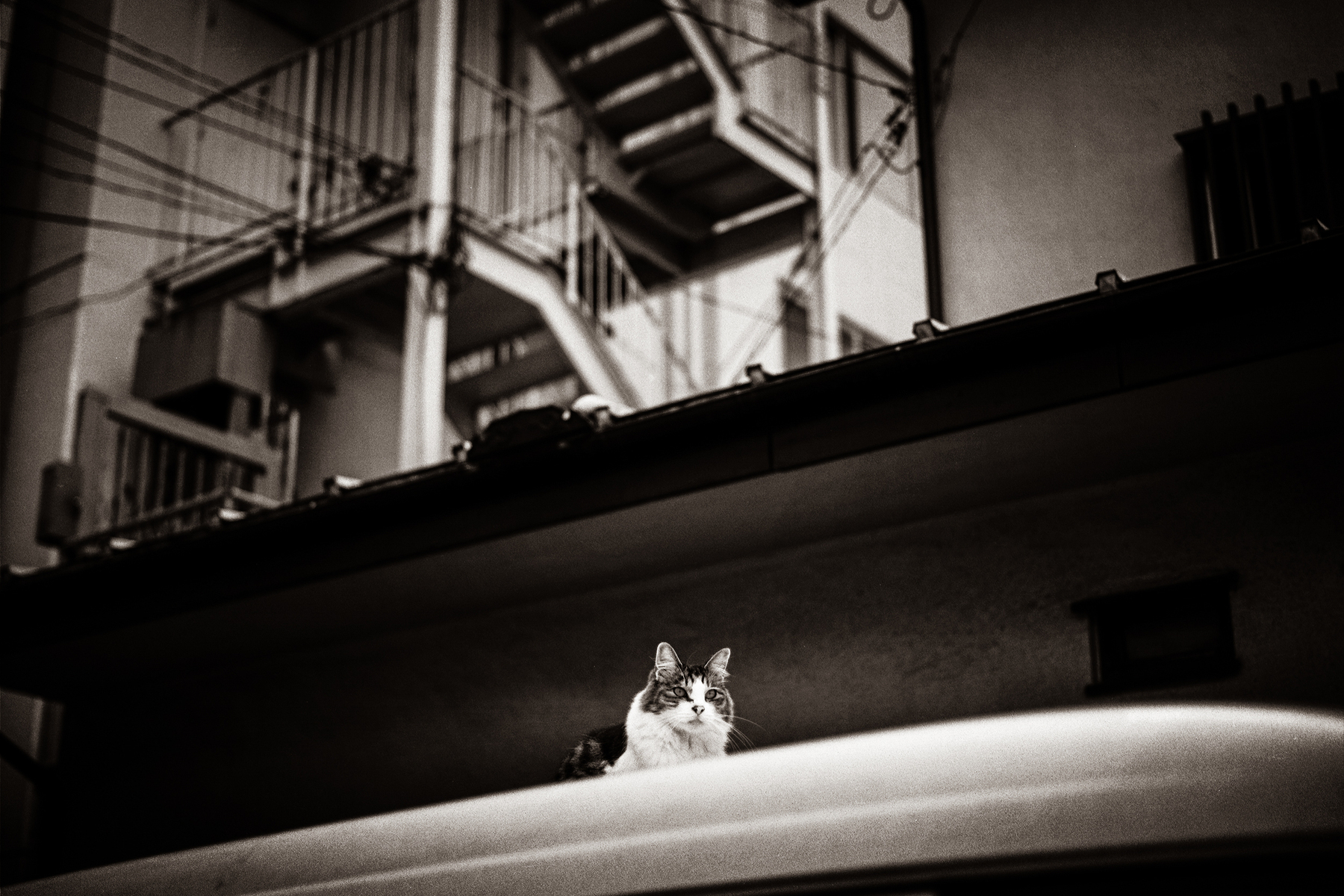
NB: The main home of these posts is Somewhere in Japan. They also go out as a newsletter, which you can sign up for here.
The cat that looks like James Hetfield usually patrols around the tiny ramen shop by the shrine in the morning. On some days, the restaurant’s sliding door is open and he can be seen sitting inside, presumably conferring with the proprietors on some matter of importance.
One suspects his duties are taxing. By the time the afternoon arrives, he is always exhausted and can be found curled in a tight ball in the dry leaves under a nearby zelkova.
A calico and a tortoiseshell oversee the nearby park, while an immense gray tabby monitors a parking lot behind a city office. A deceptively small black cat with a long coat often stations herself near the door of a cafe, where she is able to keep an eye on the patrons and receive periodic rewards in the form of physical affection.
Everywhere you go, there they are. Cats traversing rooftops and cats threading the narrow spaces between buildings. Cats grooming themselves underneath parked cars and cats sunning themselves amongst the weeds in vacant lots. When faced with humans, they scrutinize and speculate with mild disapproval (though they will occasionally deign to be petted or accept a treat).
Even those that reside with us often seem to pass judgement as they look on, giving the impression of only just tolerating our presence.
While we go off to work on packed trains and struggle to earn the money necessary to pay for the lifestyles and homes that we have neither the time nor the energy to enjoy, they laze in patches of sun and live their lives as they wish, whether inside or out.
When they sneak off to their secret gatherings, they swig from tankards of ale and make light of our follies. What fools we seem to them, acting like we’re in charge. They know we’re middle management, at best, even as we pretend to be the bosses of our lives.
Somewhere in Japan № 30: In The Small Chairs
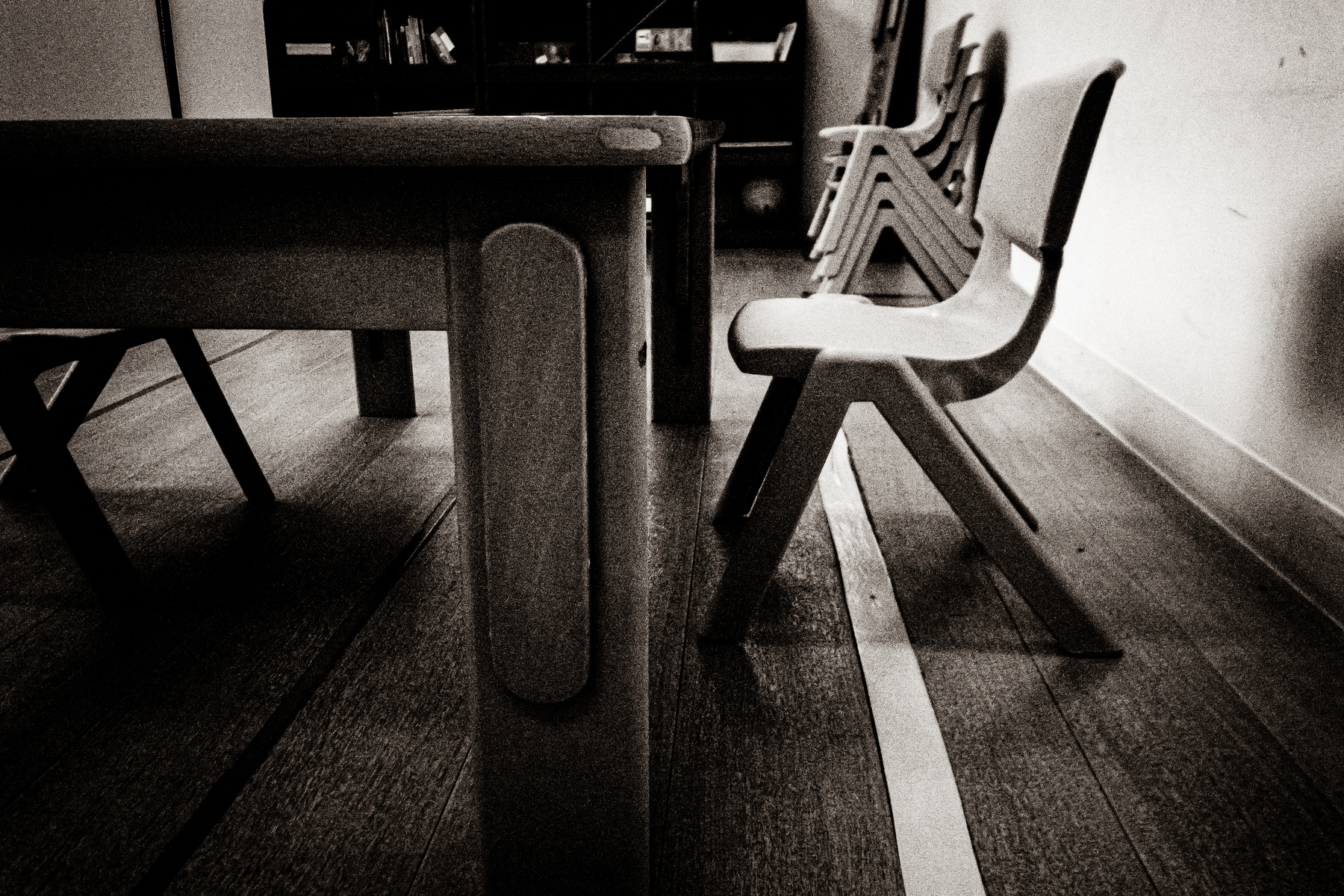
Across the table from me is a blue plastic chair, 26cm tall at the seat and 49cm at the back. It weighs about 1kg. Weighing in at about 16kg is the small boy sitting in it. Let’s call him Ira.
Ira is exceptionally cheerful. He giggles at just about everything, and is also very kind, always cheering for his classmates (even when he loses the game). He loves playing with everyone.
Unfortunately for him, he’s the only one here today, so it’s just me and little Ira all afternoon, seated at this low table. My chair is just like his, the only difference being that mine is green, which he insisted upon for reasons I cannot grasp.
Ira’s mother is Japanese, and his father is Ghanaian. They speak mostly Japanese at home and send him here to help develop his English. He’s four years old, and only barely that, so baby-speak is still peppered throughout his sentences. He often uses made-up words and pronounces things creatively.
Earlier, when asked when his birthday was, he replied Gozember.
And every time his father comes to pick him up from the school, I cannot help but wonder if he’ll grow to be as tall. Ira’s so little still, it’s hard to imagine him someday towering over others like his father does. But for now, he remains perfectly sized for his tiny chair, and he makes it look just as normal as I make mine look ridiculous.
We are singing along with Raffi songs and coloring together. Today, he is really excited to work on an Ultraman coloring sheet, and as he scribbles indiscriminately over everything with a purple crayon, he asks me periodically to confirm that he is, in fact, doing a good job. I say yes and remember that not too long ago I was still commuting into Tokyo to teach stressed-out office workers. Some of them were perfectly enjoyable people, but I’m still much happier here, now, in these tiny chairs with Ira.
Somewhere in Japan № 29: Log for 2021-04-08
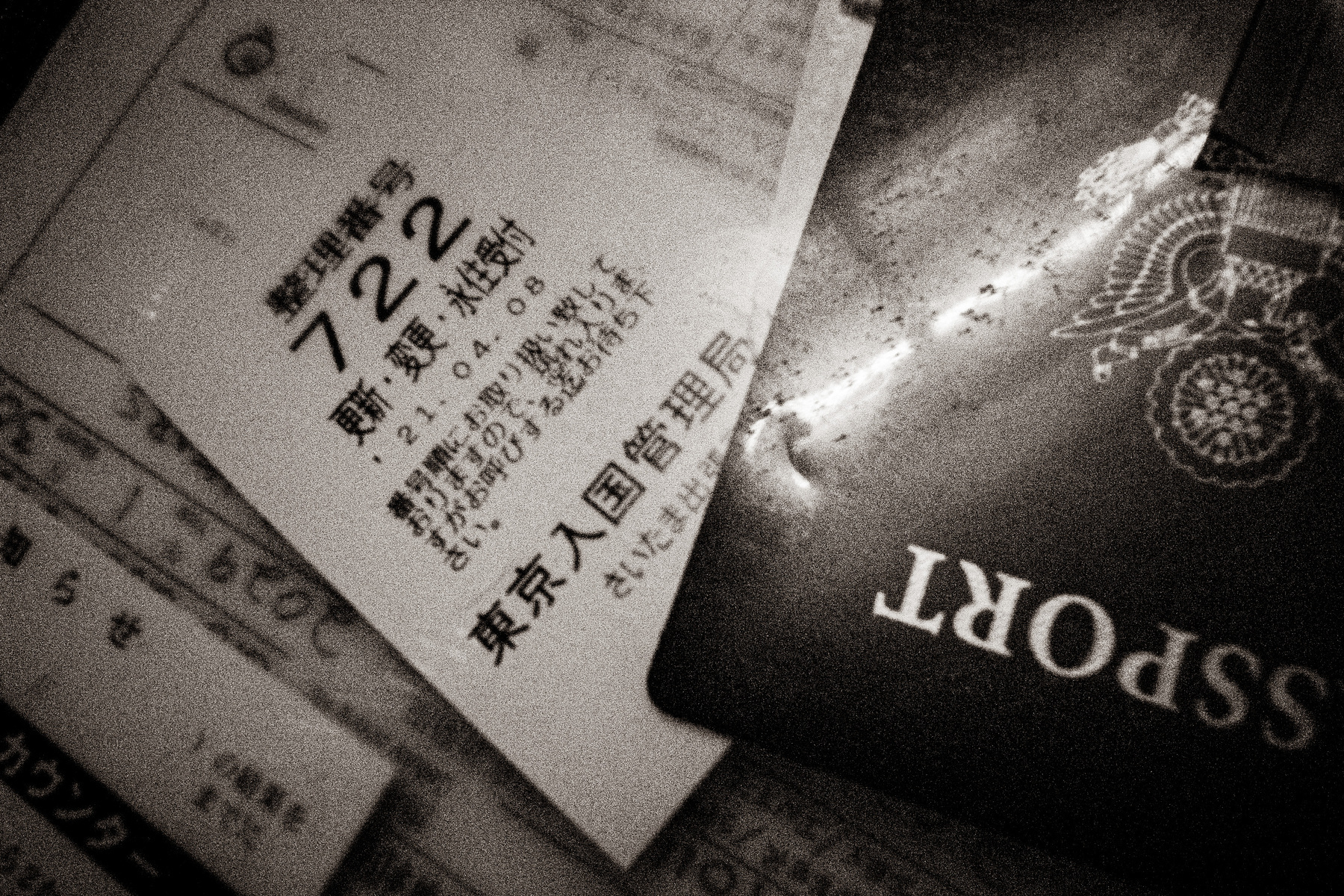
06:45 Give up on sleep, get up
06:50 Clean up cat poop, admonish cat
07:00 Begin preparing documents and everything else necessary to submit visa renewal papers, realize tax form still needed
08:30 Arrive at tax office
09:30 Depart tax office, document procured
09:50 Arrive at immigration office, realize ¥4,000 revenue stamp must be purchased
10:15 Return from post office with revenue stamp, get in the first line, realize passport has been left at home
11:10 Return from cycling 11km round-trip to retrieve passport
11:15 Get in the first line again, am told the wrong forms are wrong, given fresh forms, am told to go fill them out
11:55 Get back in first line with new forms, pass initial document check, receive number for waiting
12:40 Number called, documents accepted for review, asked to wait until name is called
13:15 Name is called, documents accepted, passport and ID card returned, told an additional five documents must be arranged by April 20
13:30 Get on the bike, ride 17km to work
14:50 Arrive at work, change clothes, start teaching
19:00 Last kids leave the school, vacuuming and mopping commence
19:30 Depart work, ride 18km home
20:40 Arrive at home, greet partner, pet cat
20:45 Eat first meal of the day
21:05 Work on documents
22:00 Take bath
22:30 Prep for Friday activities
23:35 Bed
Somewhere in Japan № 28: The Mountains and The Sea

If you grew up near the ocean, you likely take its presence for granted, in a way that you wouldn’t if you grew up far inland, where its existence seemed more academic. If you were raised in the American Midwest, for example, you would have trusted the ocean was there, but it wouldn’t seem especially real in any material sense unless you were standing in front of it.
The same can be said for large mountains, the towering majesty of which can be guessed at based on photographs, but a real sense of their immensity simply doesn’t come across through an image. It’s only when you’re standing amongst them, feeling impossibly small, that their scale is grasped.
Between western Massachusetts and Ohio, I grew up with neither mountains nor ocean at my disposal. Until I was 16, I saw the ocean once or twice a year, always after long drives to either Maine or Rhode Island. And between 1997 and 2010, I swam in the sea but twice.
I didn’t encounter mountains of an appreciable size until a single trip in high school, and I wasn’t near any again until I moved to Korea more than a decade later.
But now, I have easy access to both.
Every summer, we take the train from Saitama to Kanagawa and spend at least a few Saturdays a year on the beach. We barbecue, we read. We swim and walk along the water’s edge. We stay until the last color has faded from the western sky and stars appear over Mt Fuji, behind which the sun set.
We make our plans and we go whether the weather holds up or not. Sun is preferable, but we’ve spent entire days there in the rain, enjoying the hush of an otherwise-deserted beach from under our shelter, the rain sounds on the tarp blending with the rhythmic breaking of waves.
And sometimes we take different trains to Nagano or the Chichibu area, where we can hike all day in the mountains, eat a big dinner at an izakaya near the station, and nap the entire ride home, feeling blissfully exhausted and full of both food and experience.
In the next couple of years, we will move somewhere new and buy an old house to renovate. We will have to decide, too, whether we want to move somewhere closer to the mountains or closer to the sea. At present, that choice is unclear. We’ve made long lists of the advantages and disadvantages of each, but to no avail.
I know we will be happy wherever we end up, however, and I know that the joys of these places will never cease for me. No matter how accustomed I might become to living by the sea or up in the mountains, these places will always be special.
They won’t get old because they can’t get old. Not for someone like me, who came of age in locations that ensured a permanent appreciation of faraway mountains and seas I could never take for granted.
NB: This post can also be seen on the main website for the project, Somewhere in Japan. You can also sign up for the newsletter and receive these posts by email.
Somewhere in Japan № 27: 2,194 Days

Six years I’ve been in Japan. This last Wednesday was my sixth Japaniversary. Rather than reflect on the occasion in my usual way, though, I thought I’d expore that time through numbers.
Some of the following figures are exact. Some are approximate. A few are facetious. I’ll leave it to you to consider which figures fall into which category.
Six years in Japan, 2015-03-31 through 2021-03-31, described through various figures, presented here in no particular order whatsoever.
- Days since I moved to Japan: 2,194
- Days I’ve regretted it: 0
- Portion of my life now spent living in Japan: 15.3%
- Small crushes, largely on attractive strangers: 172,956
- First dates: 55
- First dates in just the summer of 2016: 36
- Friends gained from attempted dates via dating apps: 3
- Dates with known celebrities: 1
- Broken hearts received: 3
- Broken hearts given: 1
- People I went out with more than 3 times: 4
- Engagement rings purchased: 1
- Proposals accepted: 1
- Trips to the beach at Tsujido: 9
- Calories consumed at GoGo Curry: 72,000
- Steps taken: 32,400,000
- Approx distance: 20,380km (12,634 mi)
- Canvas sneakers worn out over that distance: 19 pair
- Hours spent teaching: 8,700
- Amount spent on wine by VIP client while out to dinners together: ¥7,500,000
- Bikelore cycling events attended: 14
- Days of work missed due to illness: 3
- Rolls of film shot: 460
- Cumulative kilometers travelled on trains while commuting: 54,000km (33,480 mi)
- Times around the Earth that equals: 1.35x
- Number of cricket bats it would take, lined up end-to-end, to equal that distance: 62,528,949
- Cumulative time spent commuting: 4 months, 28.5 days
- Apartments occupied: 2
- February 29ths: 2
- Hamsters cared for: 2
- Cats adopted: 1
- Times the above cat has pooped on the floor because he has anxiety: 280
- Neighborhood cats befriended: 100+
- Cameras, knives, etc purchased at flea markets or junk shops and restored: 5
- Onigiri eaten: 625
- Photographs taken: 85,000
- Kanji learned: 600
- Notebooks filled: 110
- Coins thrown into the box at various shrines: 460
- Lists like this made so far: 1
Somewhere in Japan № 26: Cultivated Disorder
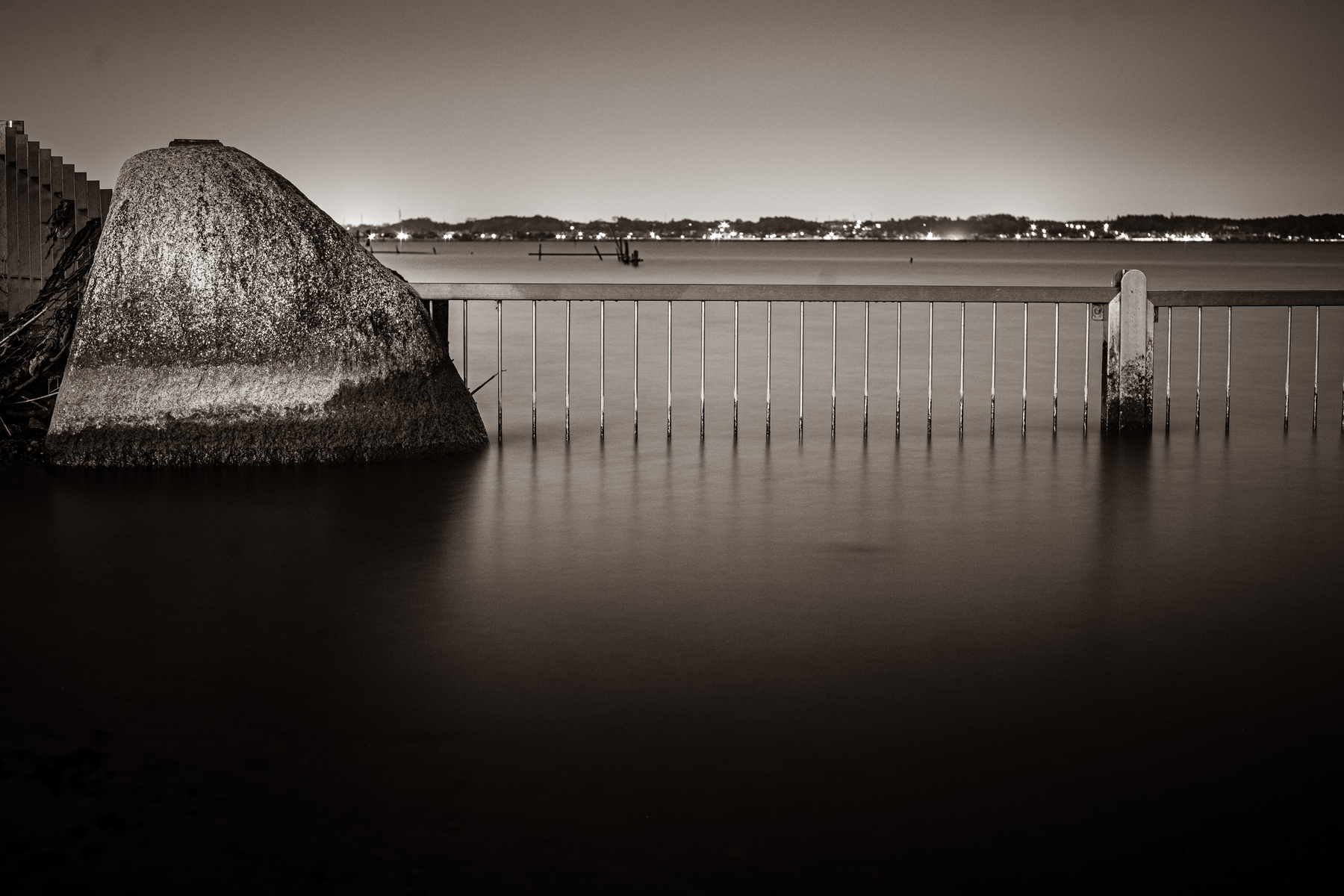
36°3'56.286"N 140°113'15.078"E
Sitting on the beach near the campground, the coarse gravel cold and damp beneath me, watching the little waves lapping the lakeshore. Houses and other buildings dot the far edge of the inlet, with clusters of lights leading off into the darkness.
A peaceful setting, but something feels strange. If I pay attention to ambient noises, what I hear most are the small sounds of the water, the wind rustling the tall grasses to my left, and a violent, gasoline-fuelled roar at a moderate distance.
Imagine a man on a highly customized motorcycle revving his engine rhythmically, swerving about the road, making a point of being as loud and disruptive as possible. Now imagine dozens of such men, perhaps even a hundred or more, all doing this together.
These are the bosozoku. Written 暴走族, the first two kanji indicate running out of control, while the third indicates a tribe. A tribe of young men running out of control on their motorcycles.
You won’t see sizeable groups of them in areas like Tokyo anymore, but they’re still out there in other places. In Ibaraki Prefecture, for example, where I am.
One of the other guys saw them when he went out, said there were at least a hundred of them in this marauding gang cruising around, taunting the police. Every once in a while, the police fire up their sirens and the engine noises cease. Only for only a few minutes, though, and then it all ramps up again. They’ve been doing this for hours.
At close to eleven in the evening, it finally stops in earnest. All fun eventually wears thin, and even motorcycle gangs eventually get tired.
When this happens, I am still near the water, writing in my notebook in the lantern light. The bosozoku are done for the night and the wind has died down. What I am left with are just the little wet sounds of the lake meeting its shore and my pen meeting the paper.
Somewhere in Japan № 25: An Aside
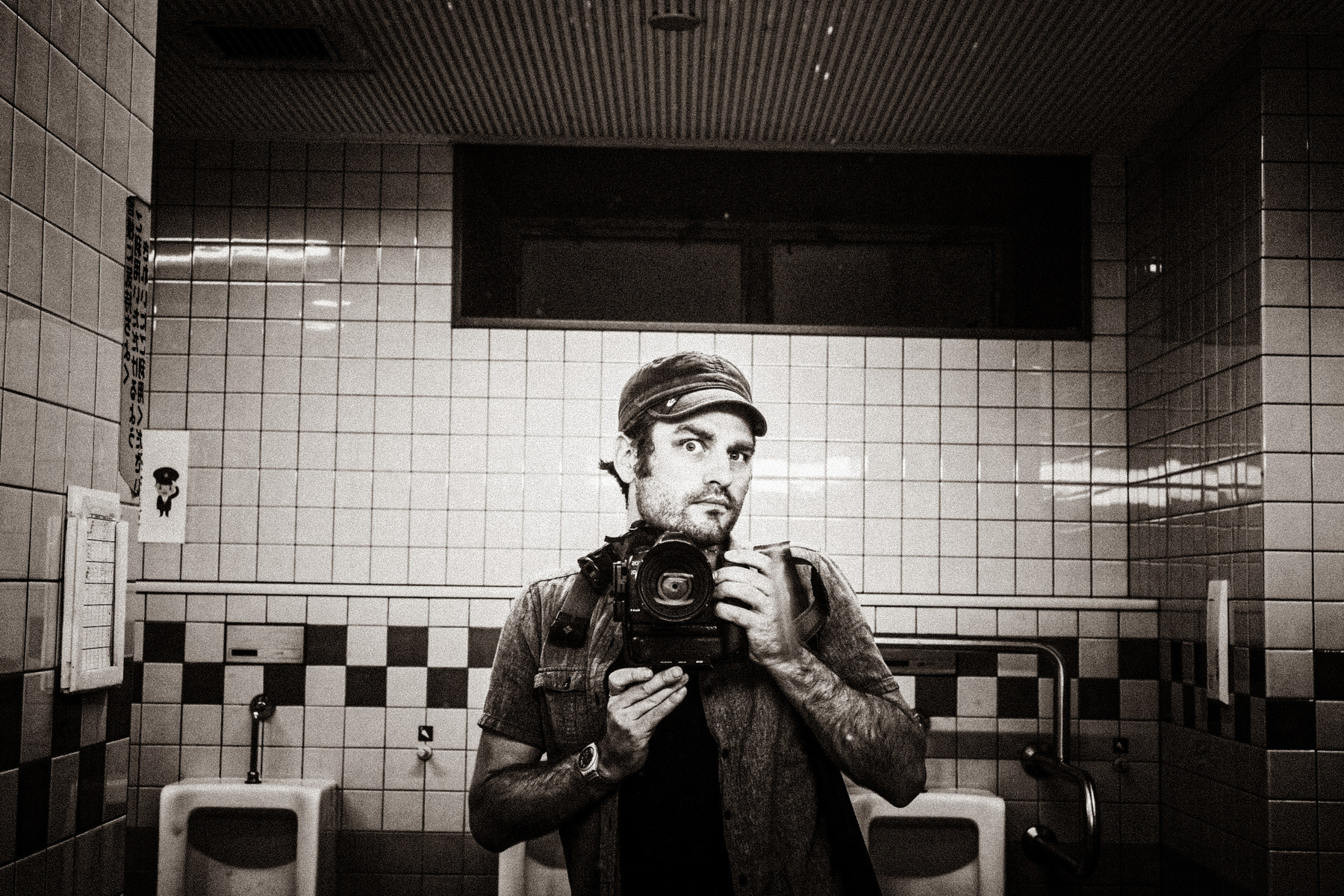
Indulge me, if you would, and let me have a bit of an aside for today’s entry. The last couple of weeks have been incredibly intense and have contained both some of the most trying and most amazing moments of my life. The outlook was especially grim just over two weeks ago, but is much, much better now.
Still, there’s still so much work to do, and I’m doing the dance one does when keeping burnout at bay, while also doing my best to amplify newfound hope. The next handful of weeks involve me needing to get my taxes filed properly in Japan and, even more complicatedly, apply for my new work visa. All of this is turning out to be much more complicated than it was five years ago when I last renewed, and it’s a major drain.
I started this project with the sense that it would be a good way to get back into a consistent writing practice. This is something I need for my long-term plans, my work, and my general life satisfaction.
It has already become highly stimulating and generative, and I can feel the writing part of my creativity getting back into shape. I’m looking forward to the end of the year, when I can look back at having successfully written all 105 posts.
This week, though, I am exhausted and stretched ever-so thin. I had some drafts, but none were very good, so instead of any of those, let me take this opportunity to thank you for your time and attention. Thank you for your encouragement and support. Thank you for the opportunity to have an audience as I make the effort to get my creative life back on track through this practice.
I am here in Japan to build an interesting life, and your being part of my audience is something that helps me get where I’m trying to go. Thanks for that.
Do something creative every day, no matter how busy you are with life. Doesn’t have to be big to be beneficial.
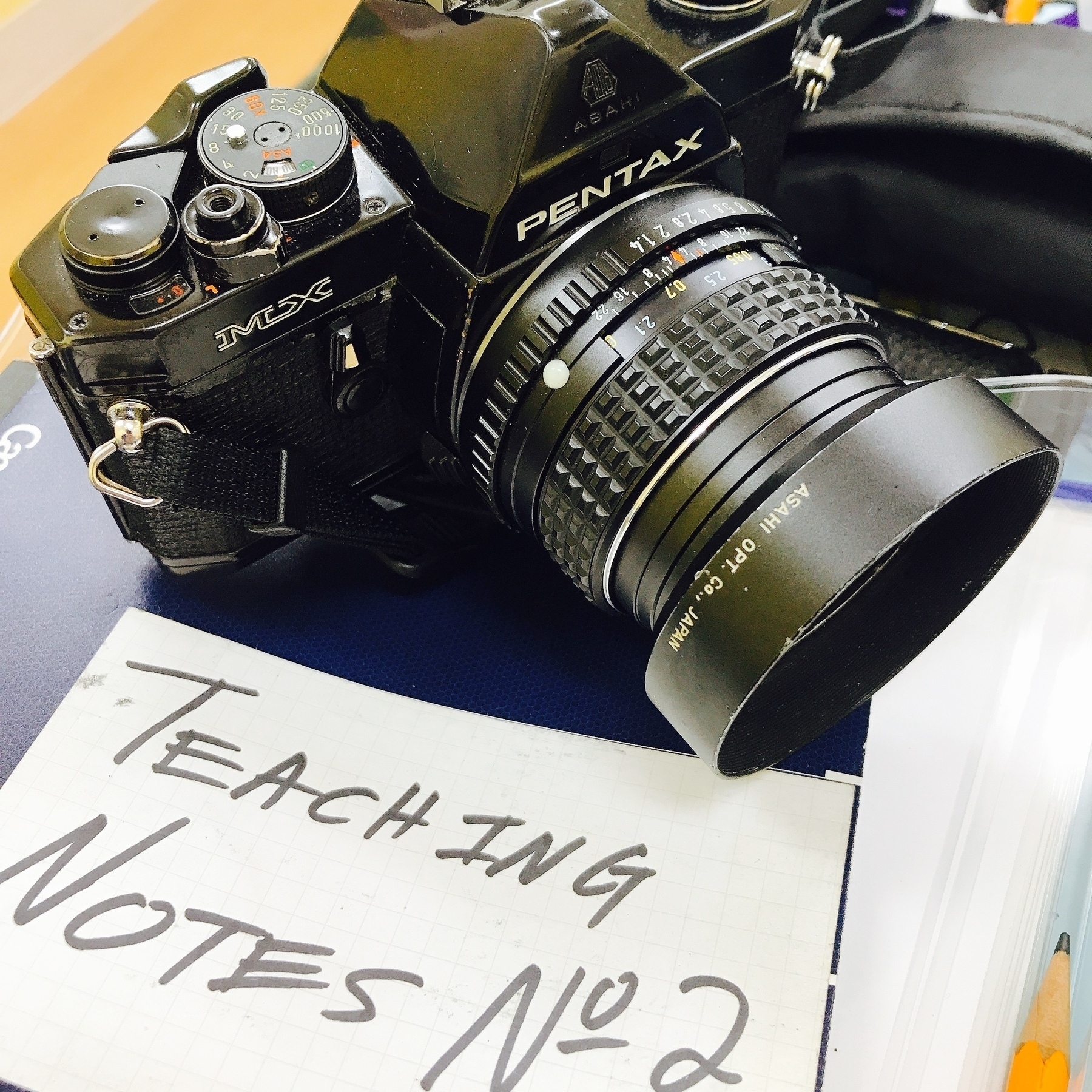
Somewhere in Japan № 24: A Festival Built For Two

Last summer, they canceled all the local festivals because of the pestilence at large. Though vaccinations are happening now in Japan, it’s slow going, and I suspect summer festivals will fall victim to the plague for a second year.
Unlike last year, though, when I just sat glumly at home, wishing I had something festive to attend, this year I will take matters into my own hands. I will make my own fun.
Festivals are reliably lovely and are my favorite cultural events of the year. The atmosphere is wonderful. There’s the food, the games, and the happy people, many of whom are wearing yukata1 or jinbei2. These are garments I sincerely believe look great on everyone, and festivals are when you see them most.
But if there are no festivals? Well then, fine. I’ll make my own surrogate festival-like experience on a personal scale.
On some balmy summer evening, I will arrive in the park just as the sun sets, well-equipped to enjoy myself.
I will drape the picnic blanket over a stone wall under a young maple tree. From one a branch, I will hang my camping lantern, which will stand in for a paper lantern. Suitable music will play on my phone at a low volume.
Next, food. I’ll prepare yakisoba ahead at home and buy karaage3 from the nearby convenience store. Takoyaki4 will come from the stand near the station, and maybe even some taiyaki5 to round things out.
These will be accompanied by cans of Asahi Super Dry, kept extra cold on ice.
But most importantly, seated next to me will be Mayumi, both of us wearing our yukata for the occasion. And while there will be no festival for us this year, we can at least remember past festivals enjoyed together and let those happy memories enrich our own small tribute to a great summer tradition.
-
A lightweight cotton kimono for summer, typically worn in more casual settings ↩︎
-
A traditional set of clothing worn in summer, a side-tying, short-sleeve kimono-style top and a pair of shorts ↩︎
-
Japanese-style fried chicken ↩︎
-
Chunks of octopus in a batter, cooked in a round molded, resulting in a golden-brown orbs of gooey, mouth-burning goodness ↩︎
-
A fish-shaped cake filled with a sweet filling, usually red bean paste ↩︎
You can also view these posts on the main site for the project, where you can also sign up to receive the posts as emails, and on the official Instagram.
Somewhere in Japan № 23: The Thinness of Walls
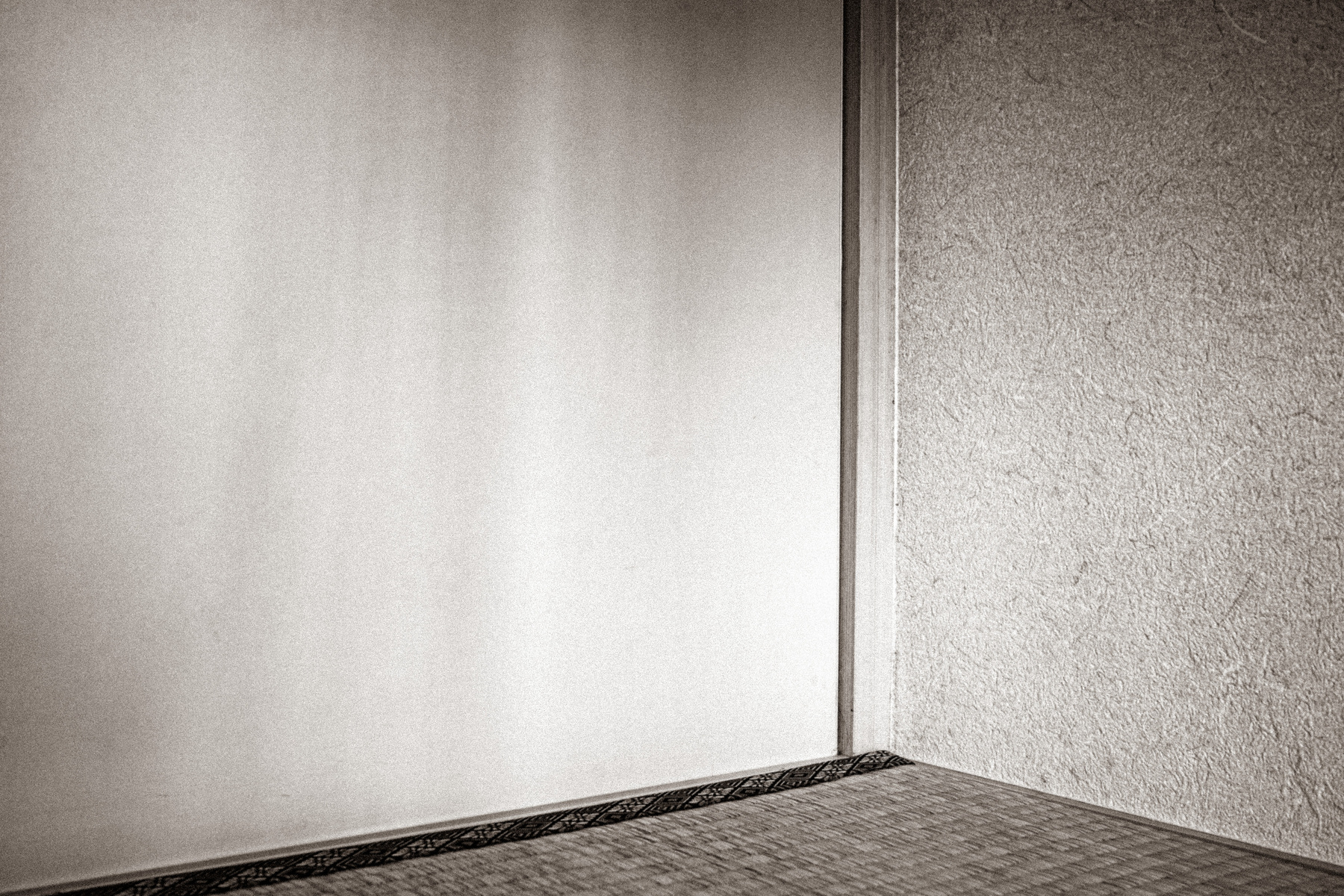
On Tuesday at 4:56 AM, an earthquake woke us. Not especially strong, but it seemed to last a long time. I reached over, took Mayumi’s hand, and we laid there wondering how long the shaking would continue.
Just after that, I could hear the sounds of my neighbor and his girlfriend speaking through the bedroom wall. The thinness of the wall might be surprising elsewhere, but seems the norm in so many buildings in Japan.
My next door neighbor is present in my life in a strange, faceless way. We've lived next to one another for about two years, and while we’ve crossed paths a few times near the building, it’s usually at night and with masks on.
I couldn't tell you how tall he is or how he usually dresses, aside from the standard salaryman suit on work days, and definitely couldn’t pick him out of a lineup.
Every day, though, I am aware of when he’s engaged in certain activities. I can hear the kitchen fan when he cooks, and the hum of the vacuum when he cleans.
A great deal can be surmised based on the muffled sounds transmitted through a thin, uninsulated wall.
I can hear his cat mewing for attention late in the evening. His curtains make a sharp rattling sound when he opens them enthusiastically in the morning. His iPhone alarm tone is the same as what I used to use. He has a peculiar sneeze.
My mind tries to construct an understanding of his personality and habits from these and other fragments. They are a strange assortment, though. I have many questions that will probably never be answered, and I can only assume that he also has unanswered questions and curious notions about me.
Somewhere in Japan № 22: The Laundry Forecast
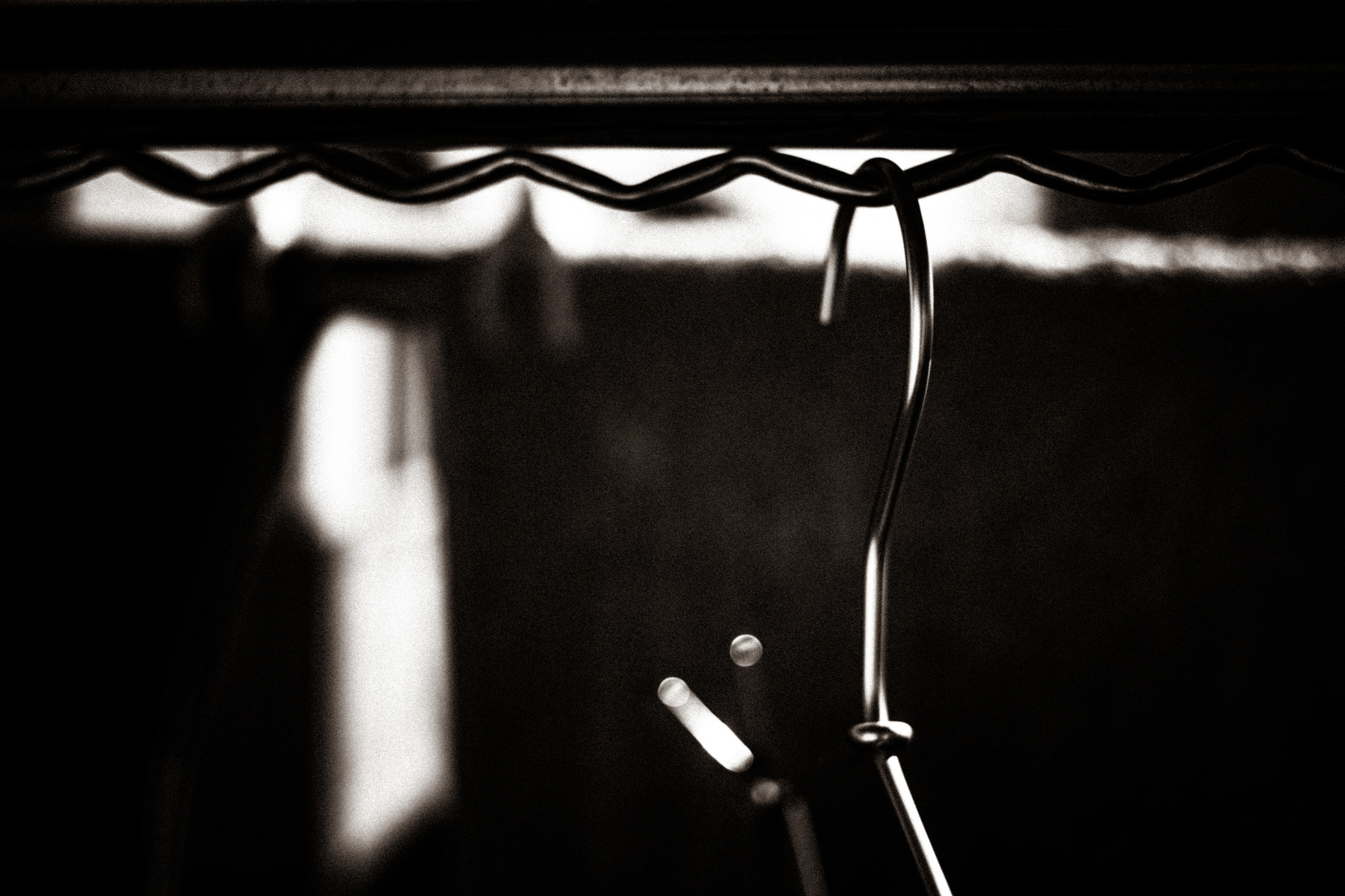
A long metal pole has invaded my living room on several occasions. Supported with a camera tripod on one end and a light stand on the other, it is always festooned with sodden garments that didn’t make it inside before the rain arrived.
Normally, freshly washed clothes go from the washing machine directly out to dry on the two long poles that, under normal conditions, run the length of our balcony. This is true all year round, and there is no dryer, so there is no real alternative.
However, Japan gets rain with a regularity that often makes drying laundry a challenge, sometimes requiring creative problem solving (such as using my photo equipment for laundry purposes).
And besides checking the weather forecast for all the usual reasons, I check it daily to help me better plan my laundry strategy in the immediate future.
Many questions come with this.
Any good laundry days coming up? Any in a row? Will the towels have enough time to dry before the next rain? What are the chances that the approaching typhoon arrives early and my underwear winds up in the neighbor’s tree again?
Air-drying your laundry has its advantages, despite the relative inconvenience of it. Aside from rainy season, when things can develop a bit of a funk, your laundry pretty much always smells good. It also puts far less wear on your clothes than a tumble dryer. Lower energy bills, to boot.
Still, dryers are convenient, and if I ever achieve the sort of success that might prompt someone to do something like upgrading their car, I might instead buy a dryer. Not to use very often, but to have on hand for extended wet periods and typhoons.
And, you know, to keep my underwear out of the trees.
Somewhere in Japan № 21: Windblown
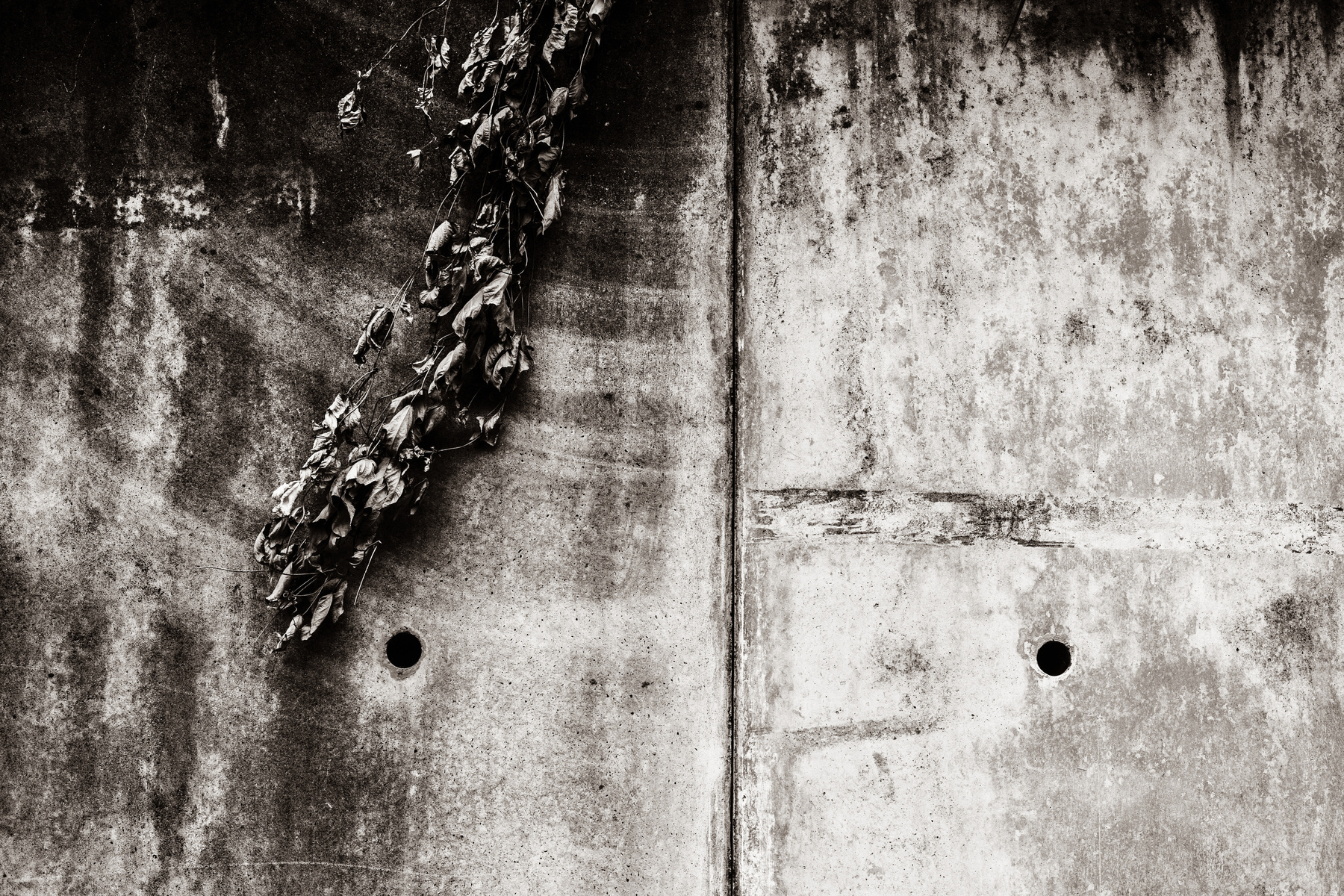
Air is only visible to us through its interactions with the world. We all know the sound of the wind in the trees and the gentle swaying of branches. We see ripples on ponds and watch autumn leaves swirling on blustery days.
But even when the air is still, we can find physical evidence of it all around us.
As water evaporates after a summer rain, it leaves fugitive, mottled patterns on streets. Or on a winter’s day, we may notice the pronounced depth of a snowdrift on the leeward side of a building.
Of particular interest to me, though, is the way in which plants, overhanging concrete walls, scribe arcs upon them through repeated movements brought on by the wind.
Though this sort of thing must occur everywhere in the world, I first noticed it in Japan. You see it on the walls containing highways and train tracks, and on retaining walls in residential areas. Even in automotive tunnels, where plants have somehow successfully grown in drainage holes, only to be whipped about by the gusts caused by passing cars.
They remain after the plants have gone, too. After every effort by maintenance teams to clean up rogue vegetation, arcs and circles remain traced on the walls, time shadows of plants that are no longer there.
A print of this image is available in the print store. Get 40% off your order with the code “awesome” at checkout. Get the Print
Somewhere in Japan № 20: Ghosts and Moonlight
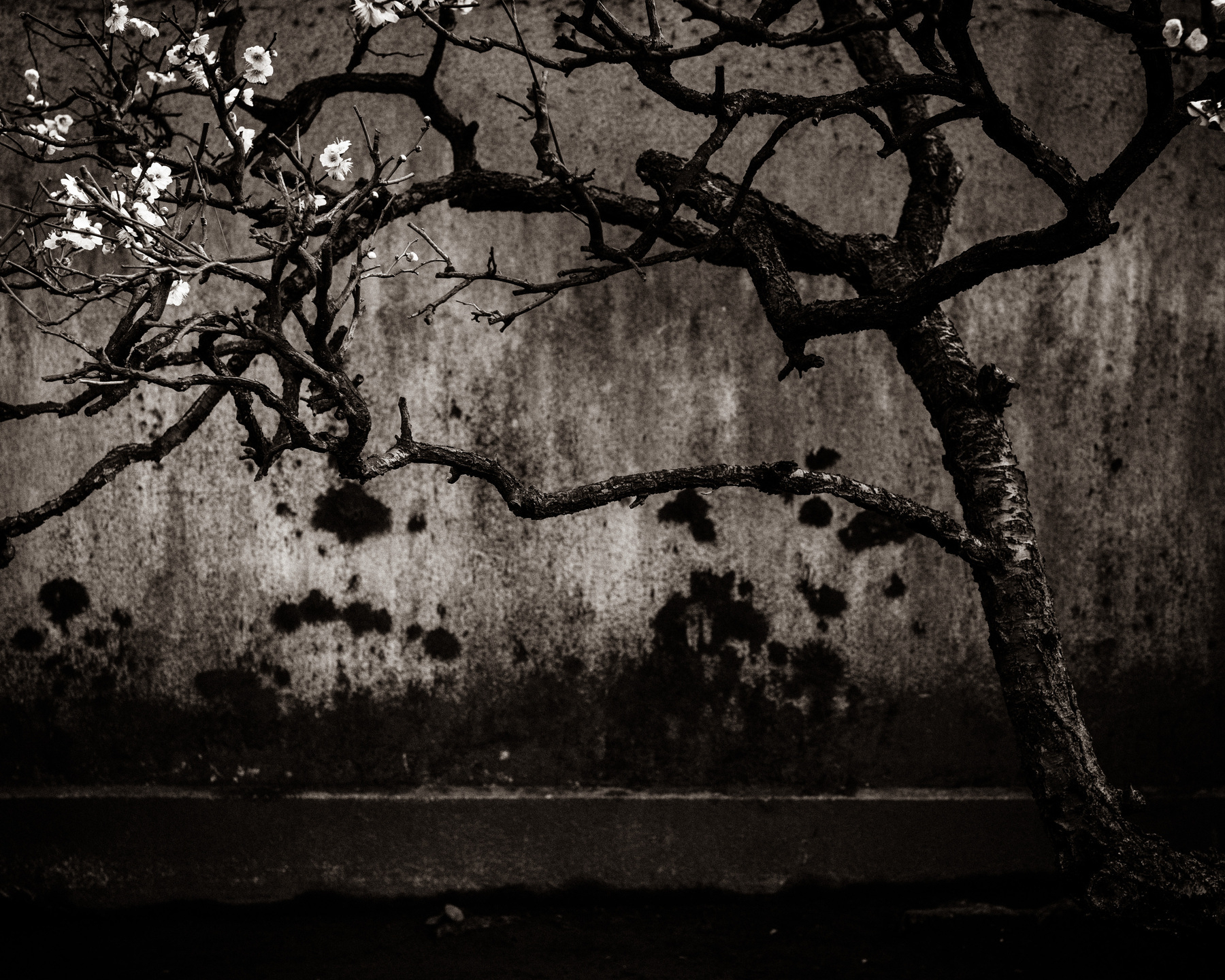
If ghosts exist, I am likely in their midst, sitting as I am between the main hall of a seventeenth-century Buddhist temple and the large cemetery just next to it. If they’re here, though, they’re not letting on.
The ghostliest things here are the plum blossoms, which I know aren’t glowing, but all the same somehow seem to be transmitting from within the moonlight falling on them from above. Behind them, everything recedes quickly into blackness. And in front of them, the stone pavers of the walkway shine clearly.
I have been sitting here in the darkness, in the dead of night, for about thirty minutes now. There are no lights on anywhere nearby, and most of the ambient light is coming from the moon. I knew where to sit and could find the place easily enough, despite the darkness, because I had made a plan in daylight to visit these blossoms on a clear night if I could.
Our eyes will adapt much better to very low light than we might expect. They need time, is all.
After 10 minutes in the dark, I could already make out my surroundings more clearly. Now, after half an hour, what I see before me seems much more like a painting than the material world I know it to be.
Moonlit surfaces reveal contours of temple buildings that I had never noticed in daylight. The stone lanterns and statues lining the path seem poised to come alive.
The trees rustle quietly in the cold breeze and sway ever so slightly, whispering something I am not wise enough to understand. Or maybe I simply don’t know the language. It’s entirely possible that they are murmuring with the nearby dead.
NB: If you like this post’s image, you can buy a print of it here. Use code “awesome” for 40% off at checkout.
Somewhere in Japan № 19: Faster Shoes
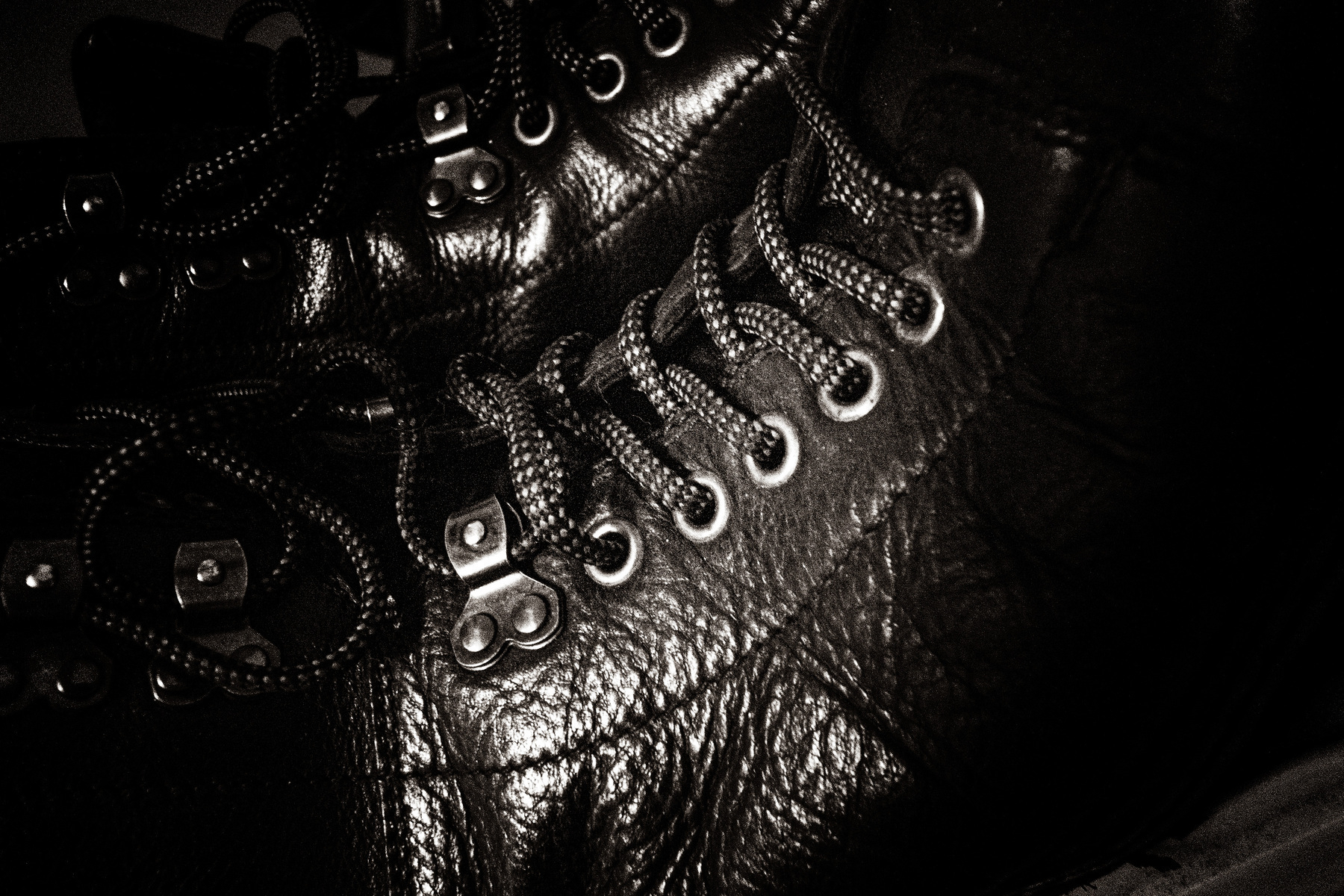
I need faster shoes. Not shoes that make me faster at running or anything like that, but shoes that are faster to put on and (especially) to take off. Living in Japan, I often have to remove my shoes, and if you’re waiting for me, I feel bad for you.
Part of the problem is that my manual dexterity goes out the window when untying shoes under pressure. It's as if my hands turn into clumsy, Johnny Tremain fleshmittens and perfectly normal knots go all Gordian for no apparent reason.
If I enter the apartment before my girlfriend, for example, she is left to stand there watching me fumble in the entryway under duress until I give up and just pry off my still-tied shoes.
On top of that, I rarely remember to untie them after taking them off, so the awkwardness of waiting on shoelace bungling is simply delayed until departure time, often with the additional pressure of having a train to catch (for which I’m already at risk of being late).
I have one pair of slip-on shoes and some sandals, but those will only get me so far in daily life. I’ve considered replacing the laces on some shoes with elastic to affect a sort of slip-on conversion, but I’ve had this idea for years and I still haven’t done it.
Loafers are theoretically an option, or at least would be, if they weren’t clearly outside my sartorial Overton window.
Boots that zip are automatically out, as well. Much as I dislike being awkward and slow, it’s still better than accepting any shoe with a zipper, a feature no shoe should have.
I think about this intensely, but only in the moment, forgetting about it soon after entering my apartment. There are solutions, but they require going to the store, and right now I don’t feel like putting on shoes.
Somewhere in Japan № 18: On Two Wheels
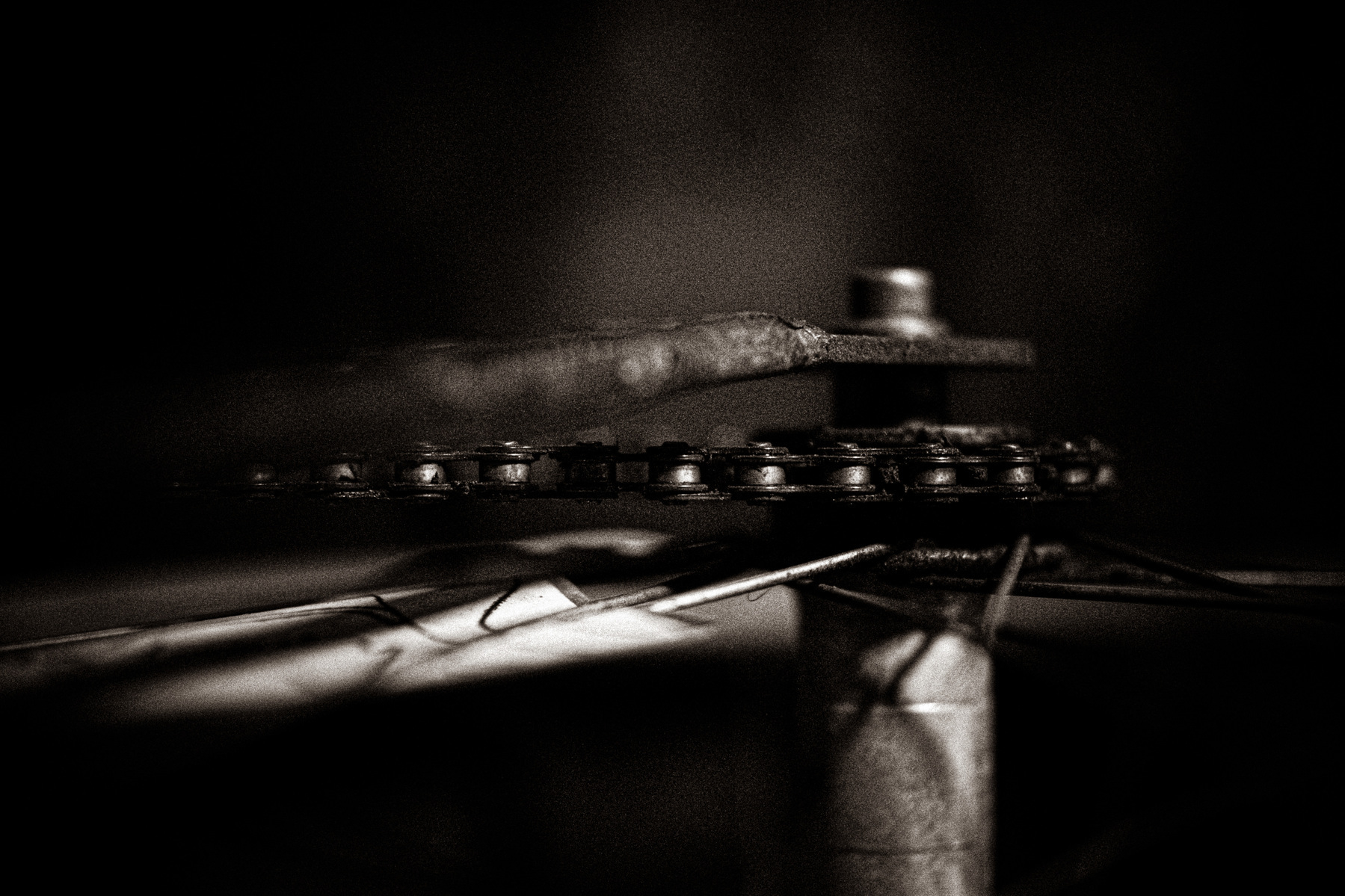
35°44'22.8768"N 139°36'15.6708"E
The last Saturday of May 2016. It is after midnight, and the two sounds most prominent to me in this moment are the hum of narrow, high-pressure tires on smooth asphalt and the soughing of the balmy, late-spring air flowing gently past my ears. I am keenly aware of the hush of my surroundings as I roll slowly, meanderingly through my neighborhood in the dead of the night.
Back in university, as a visualization to help me focus on my goal of living in Japan, I imagined and wrote a scenario very similar to this. The bicycle is a bit different, owing to a decade of evolving tastes, and I’m in Nerima rather than Shinjuku, but the impulse and action at the heart of it are the same.
In the right circumstances, riding a bicycle may become trancelike. The machine below you becomes a transparent conduit for a singular physical experience that approaches the equivalence of a flow state.
For me, this means riding late at night when the streets are empty. This means riding at a deliberately slow speed. And finally, this means doing so on a track bike.
One gear, so no shifting. No freewheel, so no coasting. Your legs are how you go and how you slow. It is the simplest, most direct experience available on two wheels.
I have no destination, just an urge to be in motion. I follow no particular route, though I nearly always turn in the direction of any cats I see crossing the street. I stick to the smallest, quietest roads I can find and continue until the urge to move transitions into an urge to be still.
On this night, I eventually find myself lying still on a park bench just a short distance from my apartment, watching the daphne-scented wind blow a zelkova’s branches to and fro, showing and hiding Orion’s belt behind fresh spring leaves.
My slow cooker most often gets used as a water bath for sous vide. I’m sure it’s deeply offended by this.
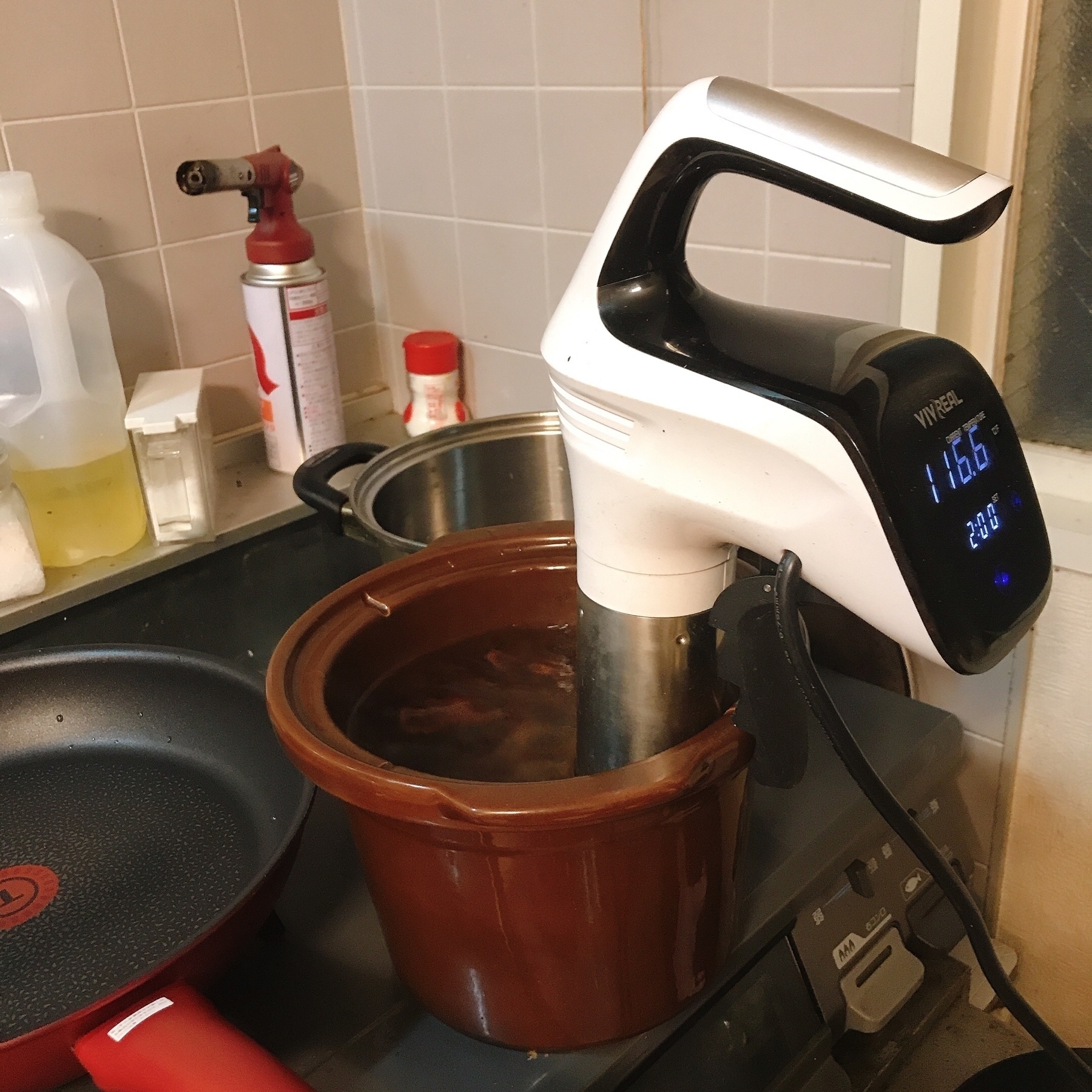
No 17 In the Park
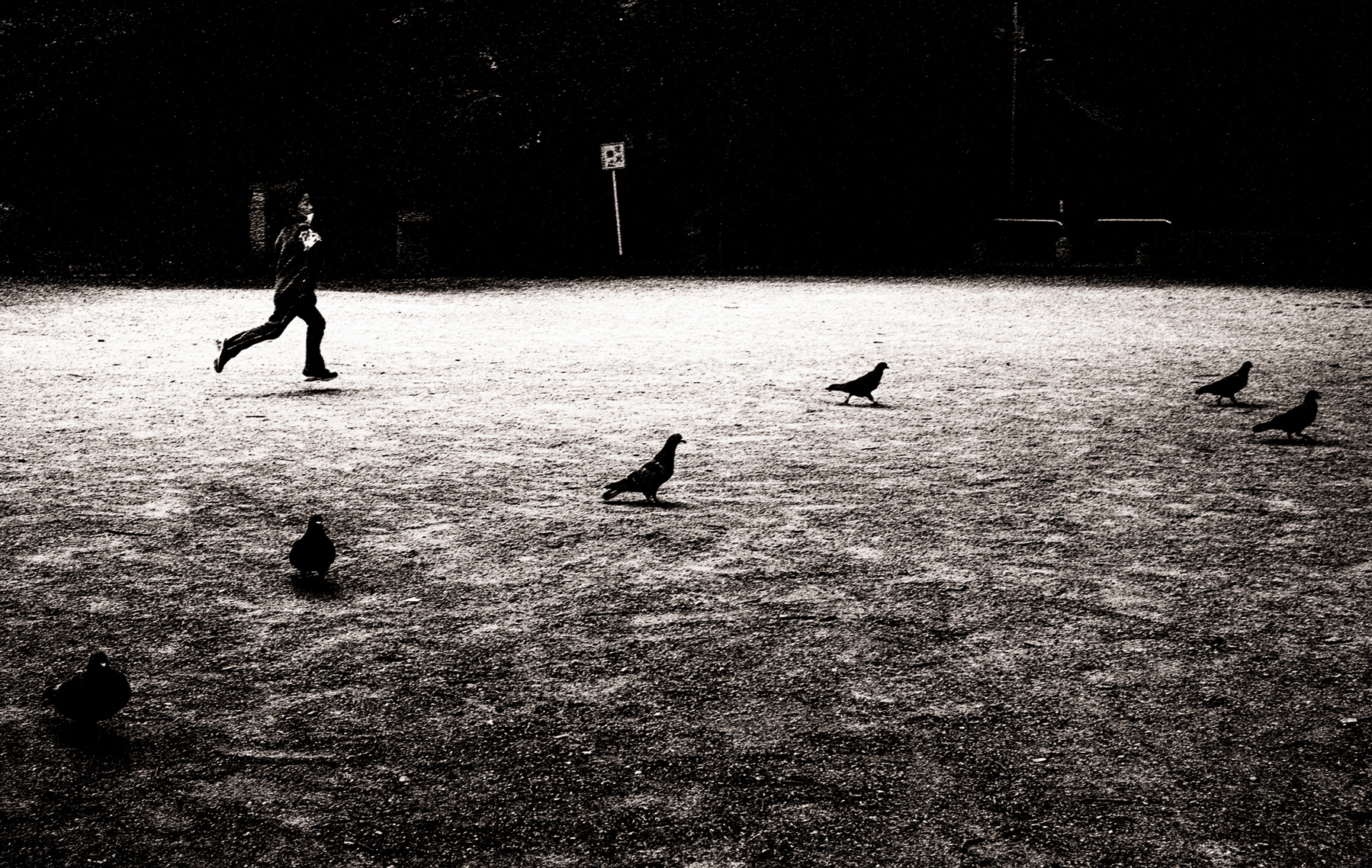
35°51’13.2228"N 139°39’23.529"E
There is a bench that I think of as my bench, in a park that I think of as my park. If I am not at home, not at work, and not walking around, there’s a good chance I’m sitting on my bench.
I first visited the park nearly six years ago, on the day I moved to Japan. A friend brought there me to join an evening cherry-blossom party. Several years later, when I moved from Tokyo to Saitama, I realized happily that it was only a two-minute walk from my new home.
I go there nearly every day, whether to read, to write, or just sit and let the world do what it will as I watch. It does a lot, but what I most enjoy in the park is to see the different categories of people who cycle through the park as the day progresses.
Retirees do calisthenics in groups early every morning. Preschool classes and mothers with young children arrive in the mid-morning or early afternoon, playing cheerfully and sprinting across the open spaces with glee.
Dogs and their humans congregate in the early evening. In the late evening, couples and exhausted office workers alike steal a few quiet moments before heading home.
You’re apt to find me there at any time when I don’t have good reason to be anywhere else. Usually, I’ll have with me something to read, a notebook, and a pen, though sometimes they just sit by my side. The park is diversion enough on its own.
